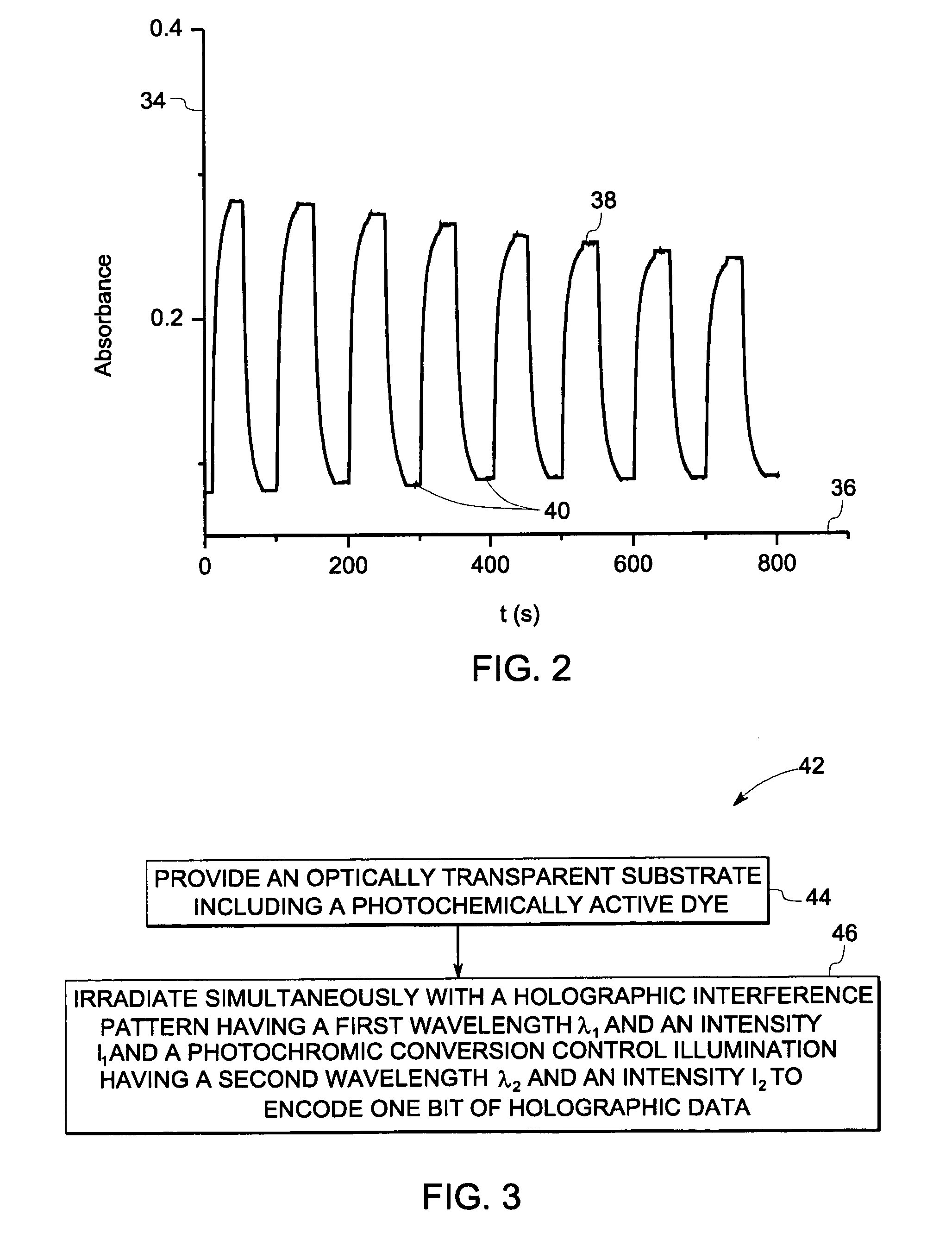Holographic data recording method and system
a data recording and optical data technology, applied in the field of optical data storage techniques, can solve the problems of reducing the availability of photo-active monomers or oligomers for data storage, requiring thick crystals, and requiring expensive linbo/sub>3/sub>3/sub>3/sub>3/sub>, so as to achieve the effect of reducing the number of photo-active monomers or oligomers available for data storag
- Summary
- Abstract
- Description
- Claims
- Application Information
AI Technical Summary
Problems solved by technology
Method used
Image
Examples
examples
[0072]Several samples of diarylethene (structural formula VII) doped thermoplastic disks were prepared. The dye (VII) was prepared according to standard procedures known in the art. The dye was blended with polycarbonate optical quality powder and the blend injection molded to form small disks. The disks were about 5 cm in diameter and 1 mm in thickness. The diarylethene concentration was about 0.26 wt %.
[0073]FIG. 5 is a schematic representation of a dual wavelength photochromic conversion system 56 used in this example. The sample 62 was illuminated by a beam from a laser source 58 having a wavelength of 405 nm beam (blue beam) at normal incidence to the disk. A mechanical shutter 60, controlled by a computer, was used to pulse (turn on and off) the 405 nm laser beam being incident on the sample 62. At an oblique angle of 45 degrees, a 532 nm beam (green beam) illuminated the sample, overlapping a volume illuminated by the blue beam. Green beam illumination of the sample was initi...
PUM
 Login to View More
Login to View More Abstract
Description
Claims
Application Information
 Login to View More
Login to View More - R&D
- Intellectual Property
- Life Sciences
- Materials
- Tech Scout
- Unparalleled Data Quality
- Higher Quality Content
- 60% Fewer Hallucinations
Browse by: Latest US Patents, China's latest patents, Technical Efficacy Thesaurus, Application Domain, Technology Topic, Popular Technical Reports.
© 2025 PatSnap. All rights reserved.Legal|Privacy policy|Modern Slavery Act Transparency Statement|Sitemap|About US| Contact US: help@patsnap.com



